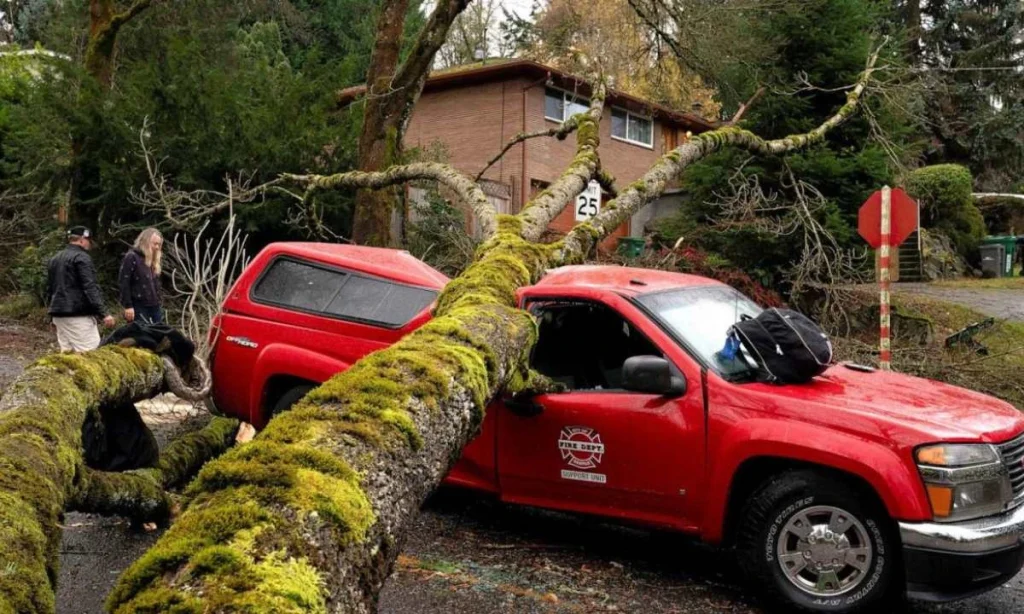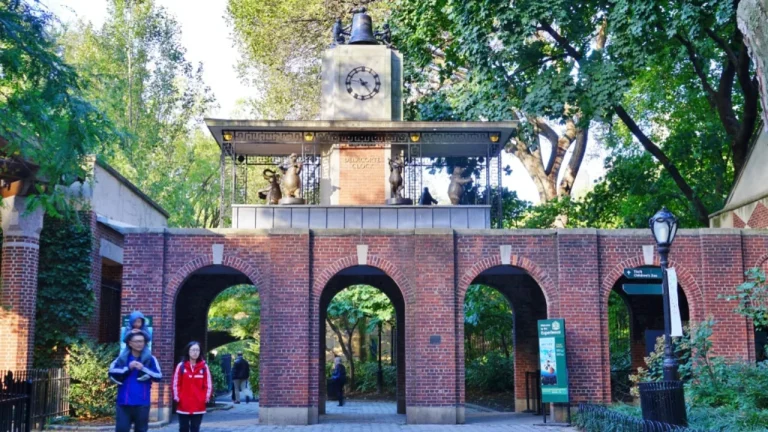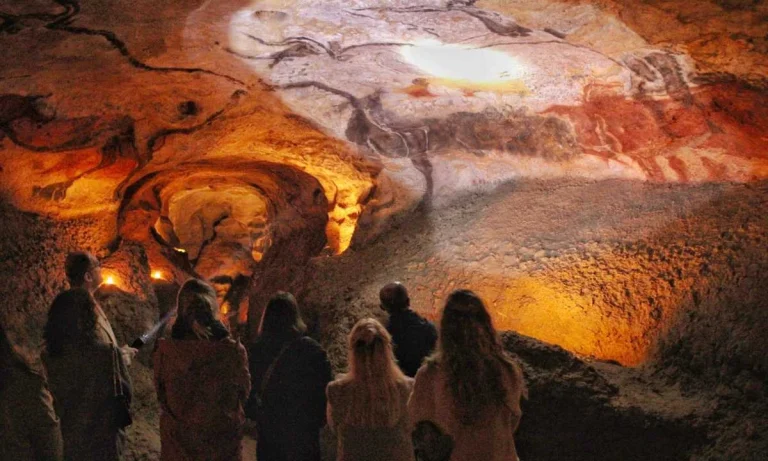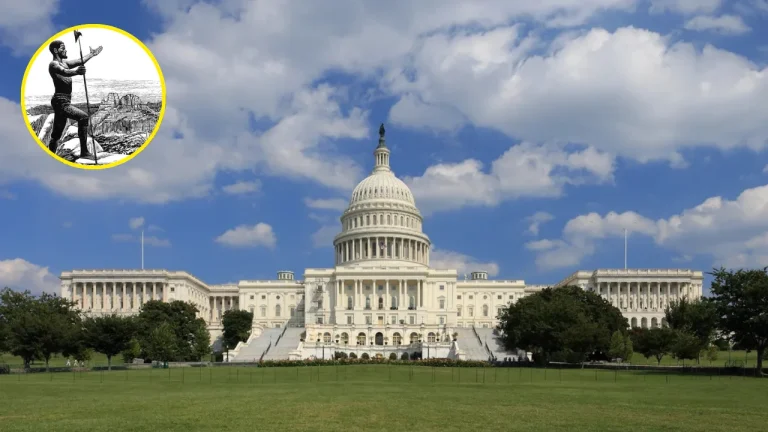When nature unleashes its fury, the impacts can be devastating. Recently, a “bomb cyclone,” hit the Pacific Northwest. This extreme weather phenomenon brought powerful winds, relentless rain, and heavy snow. It left over seven million residents in the U.S. and Canada grappling with its effects. Power outages affected hundreds of thousands of homes, and even schools were closed. Tragically, the storm claimed lives, including two women in Seattle who were killed by falling trees in separate incidents.
As meteorologists explained, the cyclone was fueled further by an atmospheric river. It is a narrow band of moisture originating from tropical regions. The combination of these two powerful systems created a “once-in-a-decade” event. Let’s have a look at the details.
The Bomb Cyclone’s Destructive Path

Chaos Across the US Northwest and Canada
The storm, which meteorologists dubbed a “bomb cyclone,” hammered the region, affecting states along the Pacific Ocean and stretching into Canada. Winds reached hurricane force and torrential rain caused widespread damage.
- Seattle, Washington, faced tragic fatalities as falling trees claimed the lives of two women in separate incidents. One was struck while showering in her home, and another was killed in a homeless encampment in Lynwood.
- Thousands of homes were damaged by fallen trees, while roads were littered with debris. The Bellevue Fire Department noted, “Trees are coming down all over the city, with multiple falling onto homes.”
Widespread Power Outages and School Closures
The storm left more than 700,000 homes and businesses without power in Washington, with outages also reported in California and British Columbia. By midweek, the number had decreased to about 500,000 in Washington and 15,000 in California. Schools across Washington were forced to close, disrupting daily life further.
In northern California, flash flooding and potential mudslides became major concerns, with the San Francisco Bay area expecting up to 8 inches (20 cm) of rain. Meanwhile, in British Columbia, Canada, wind gusts reached 100 mph (160 km/h), leaving 140,000 without power.
What is a Bomb Cyclone?
A bomb cyclone forms when air pressure rapidly drops—24 millibars in 24 hours—leading to an explosive intensification of the storm system. This phenomenon brings an array of extreme weather, including:
- Blizzards in high-elevation areas like the Cascade Mountains.
- Severe thunderstorms and heavy precipitation.
As BBC Weather presenter Stav Danaos explained, “Damaging gusts would continue to ease…although conditions are expected to remain blustery along the Pacific coast.”
Why the Pacific Northwest is Vulnerable
The geography and climate of the Pacific Coast make the region particularly prone to such events. Coastal storms gain strength as they pull in moisture from the Pacific Ocean, especially during the colder months when atmospheric rivers—a key contributor to this event—become more active.

The Role of Atmospheric Rivers
An atmospheric river is a narrow band of concentrated moisture traveling from tropical regions to other parts of the globe. These weather systems can intensify storms, and in this case, combined with the bomb cyclone to create a “once-in-a-decade” event.

A Dangerous Combination
As the bomb cyclone’s winds died down, it collided with an atmospheric river, leading to life-threatening flooding and landslides.
- Flash flooding inundated roads and homes, particularly in Northern California and Oregon.
- Rockslides and debris flows became imminent threats, with emergency responders bracing for more challenges as heavy rain persisted.
The combination of these two phenomena highlights the need for improved emergency planning and climate resilience in vulnerable areas.
Stories of People | Personal Accounts of Loss and Survival
The human impact of this storm is deeply felt. In Seattle, one woman’s life ended tragically while she was showering. A tree came crashing through her home. Firefighters had to rescue her husband from the dangerous scene. Another life was lost in Lynwood when a tree struck a homeless encampment.
Residents shared haunting descriptions of the destruction. In Issaquah, a city known for its natural beauty, one man described the storm’s aftermath: “It looked like a bomb had hit.”
Firefighters and rescue teams worked tirelessly under hazardous conditions. The Bellevue Fire Department urged people to stay indoors: “If you are able, head to the lowest floor you can and stay away from windows. Do not go outside if you can avoid it.”
Preparing for Future Storms
Extreme weather events like this remind us of the importance of preparation:
- Emergency Kits: Include essentials like water, food, and flashlights.
- Evacuation Plans: Know the safest routes and locations in your area.
- Communication Strategies: Stay updated through reliable sources and have a way to contact loved ones.
While bomb cyclones and atmospheric rivers are not new, climate change is intensifying their effects. Warmer temperatures allow for increased moisture in the atmosphere, leading to heavier rainfall and stronger storms.
Conclusion
The bomb cyclone that struck the Pacific Northwest serves as a stark reminder of nature’s power. It disrupted lives, caused unimaginable loss, and exposed vulnerabilities in infrastructure and emergency response. Yet, amidst the destruction, stories of human resilience and quick action shine through.
As we face a future of more frequent extreme weather, it’s crucial to prioritize preparation, understand the impact of climate change, and work together to build a safer, more sustainable world. Have your own story or insights about the storm? Share them to help foster community awareness and preparedness.











